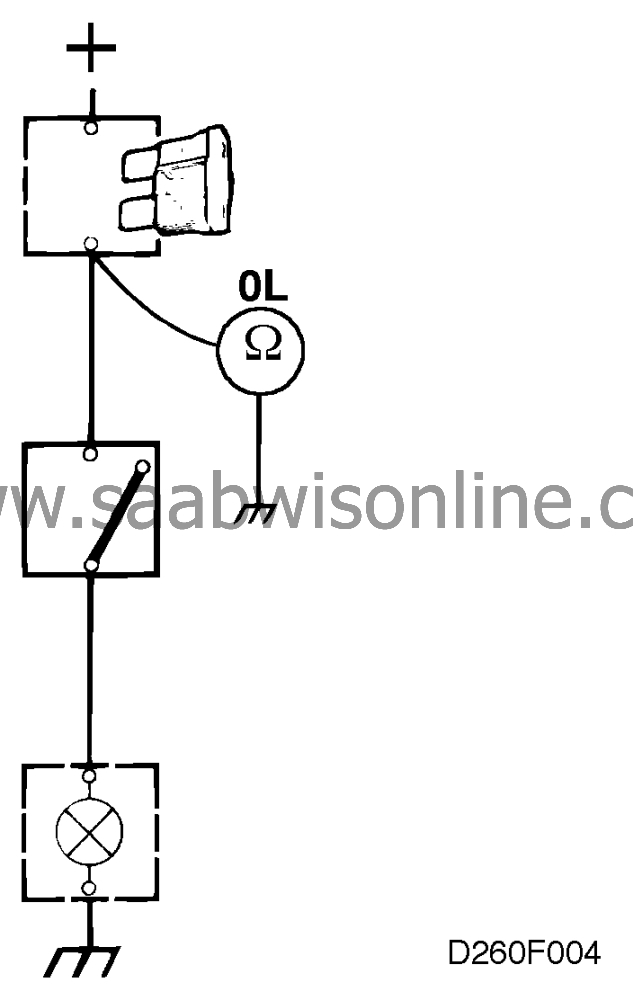Testing for continuity/shorting
|
|
Testing for continuity/shorting
|
|
Open circuit (resistance measuring)
|
|
1.
|
Make sure that the component or cable to be checked is not live.
|
|
2.
|
With the instrument set for resistance measuring, connect the measuring cables to each end of the component or cable to be checked. The resistance for wiring should normally be less than 1 Ohm. For components, the specified values apply.
|
|
Open circuit (voltage measuring)
|

|
1.
|
Switch on the load, if any.
|
|
2.
|
With the instrument set for voltage measuring, connect the black measuring cable to safe ground and the red measuring cable to the cable side.
|
|
3.
|
Start at the output on a control module/switch, measuring away from it and continue along to the load. When the voltage disappears, you have just passed the break.
|
|
4.
|
Start at the input to a control module/consumer, measuring away from the power source and move gradually in towards the control module/switch. When the voltage disappears, you have just passed the break.
|
|
Short circuit to ground (resistance measuring)
|

|
1.
|
Make sure that the cable to be measured is not live and that the load, if any, is disconnected.
|
|
2.
|
With the instrument set for resistance measuring, connect one measuring cable to the load side of the wiring and the other measuring cable to a safe grounding point in the car.
|
|
3.
|
Carefully touch the wiring and check simultaneously that the instrument shows infinite resistance (OL) all the time.
|





